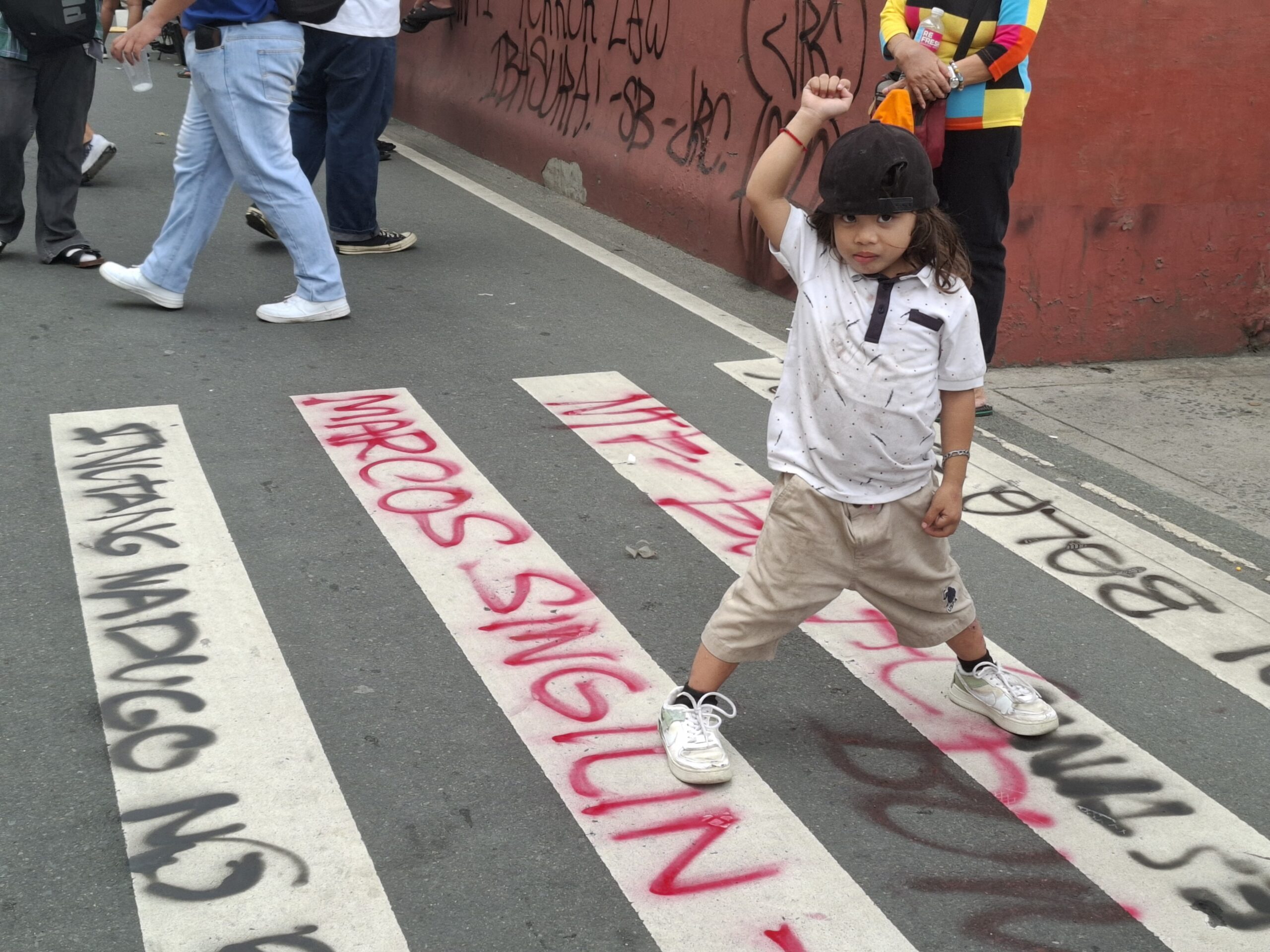In commemoration of the 52nd anniversary of Martial Law, the streets are once again alive with vibrant expressions of protest. Streamers, placards, and even slogans painted on pedestrian crossings have become essential elements of the annual rally.


This year’s protests against the Marcos Jr. administration have also highlighted Oplan Pinta, Oplan Dikit (OPOD) where activists take over public spaces with art that calls for accountability, justice, and human rights.




From the era of Ferdinand Marcos Sr. to today’s political climate, sociopolitical art has continued to play a vital role in expressing dissent and growing resistance movements.
Art critic Alice G. Guillermo once described sociopolitical art as a tool that bridges the gap between creative expression and mass movements. Red-letter day protests like the anniversary of Martial Law continue to demonstrate this.
In the face of yet another Marcos rule, cultural workers and artists persist in using public art as a form of resistance. Up to this day, OPOD campaigns are a bold reminder that sociopolitical art does not just exist in galleries. It takes up space in the streets—visible and urgent.
The roots of sociopolitical art
The history of sociopolitical art in the Philippines reaches far back into the 19th century. One of the earliest examples are the Basi Revolt series of Esteban Villanueva in 1821.
Villanueva’s paintings documented the Basi Revolt of 1807, a local uprising in Ilocos against the Spanish colonial government’s monopoly over the production and sale of basi, a traditional sugarcane wine. He captured the revolt’s colonial exploitation and violent suppression by Spanish forces, from the initial protests to the violent crackdown, through economic and cultural oppression.
His paintings are remarkable not only for a historical documentation but also for the early engagement with political themes, being one of the first instances where art was used as a tool for sociopolitical expression in the country. These significant artworks also became a testament as to how art can capture local struggles and foreshadow the revolutionary imagery that would define future propaganda movements.
Sociopolitical artworks under Marcos Sr.
The imposition of Martial Law marked a turning point in the development of sociopolitical art in the Philippines.
In Protest/Revolutionary Art in the Philippines, (1970–1990), Guillermo emphasized that sociopolitical art in the Philippines has always been about more than just self-expression but a form of direct political engagement, deeply intertwined with mass movements, particularly during periods of dictatorship and political repression.
As the Marcos Sr. regime clamped down on free speech and imposed censorship, artists turned to underground means of expression. Posters, murals, graffiti, and performances became tools to reject the looming dictatorship and authoritarian rule.
Cultural worker Lisa Ito-Tapang’s Visual Arts and Activism in the Philippines noted the ranks of progressive artists and cultural workers grew within the Student Cultural Association of the Philippines (1959), the Cultural Bureau of the activist youth group Kabataang Makabayan (1964), the Nagkakaisang Progresibong Artista at Arkitekto (1971-72), and Pangkat Sining (1970).
These group of artists and collectives as early as the declaration of Martial law rejected commercialism and turned toward creating works that engaged directly with social issues as their art took on a revolutionary tone, depicting human rights abuses, poverty, and the resistance of the working class and peasants. For these artists, taking up space in public spheres was not just about art—it was about reclaiming the streets for the people.
Tools of repression against sociopolitical art
Bold expressions of dissent especially through sociopolitical art are not without consequences.
OPOD, often involves painting or pasting protest art in visible locations, first gained traction during the protests against the Marcos Sr. regime. It has since became a vital tool up to this day against continuing state repression, wide-scale disinformation, and historical distortion committed by yet another Marcos rule.
However, in 2019, cultural group Panday Sining was accused of vandalism and later declared as persona non grata for putting up slogans “Presyo, Ibaba! Sahod, Itaas!” and “US-China Layas!” in Lagusnilad underpass in Manila. Despite this, the group defended their actions and argued that protest art was essential in raising awareness and creating spaces for critical dialogue.
More recently, last September 19, two days before the commemoration of Martial law declaration, three youth activists from Polytechnic University of the Philippines were arrested upon conducting OPOD. The students had painted protest messages on public walls along España Boulevard, demanding justice and accountability from the Marcos Jr. administration.
Such arrests were made possible using existing laws like City Ordinance No. 8609 or Anti-Vandalism.
These reflect a pattern that goes back to Martial Law, where artistic expression was met with repression. However, the persistence of OPOD shows that the youth and artists remain undeterred. Much like in the past, they will continue to take up public spaces with their messages and to turn the streets into canvases of resistance.
The future of sociopolitical art
Guillermo emphasized that sociopolitical art takes up various platforms to challenge the status quo.

This remains true today. While social media have been maximized for expressing dissent and activism, the physical presence of art in public spaces echoes that the streets belong to the people, that the streets themselves are a medium for protest with slogans and demands painted on the ground to disrupt daily life and forcing passersby to confront the messages beneath their feet.


Art, as Guillermo pointed out, will always take up space in both the public and political imagination. As long as there are voices to be heard, walls to be painted, and injustices to be fought, Filipino artists will continue to use their craft to challenge power, honor history, and inspire resistance.
From Marcos Sr. to Marcos Jr., the struggle continues—and so does the art.



